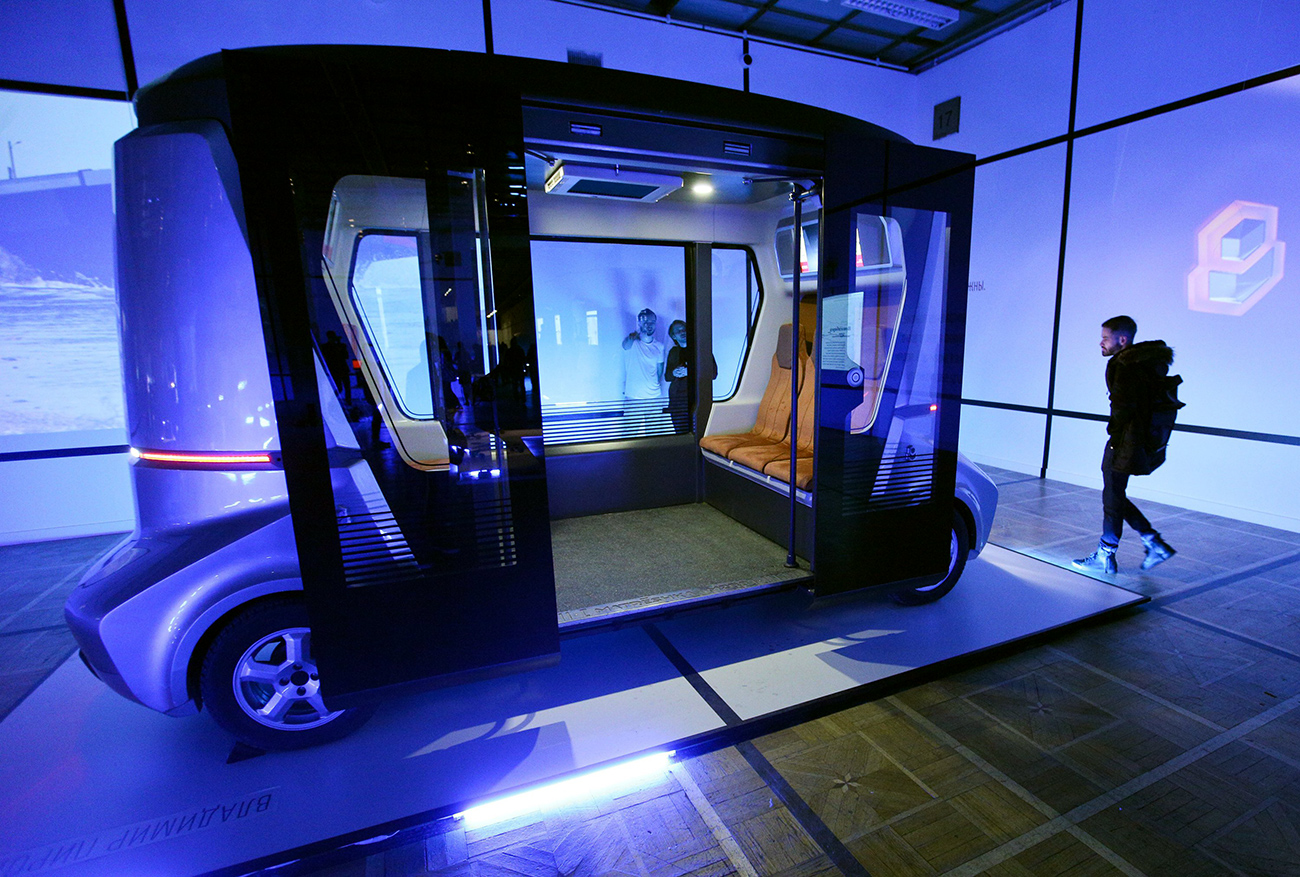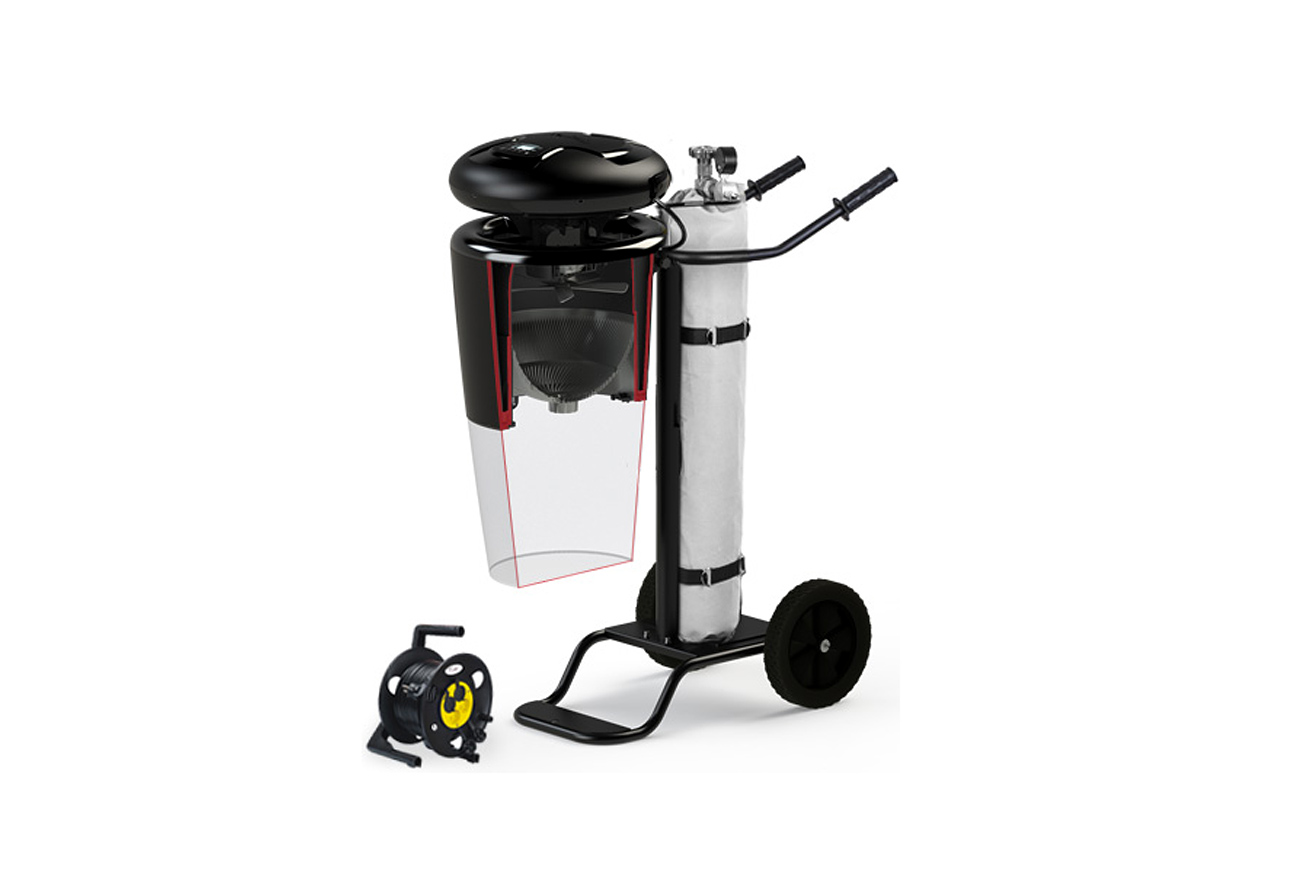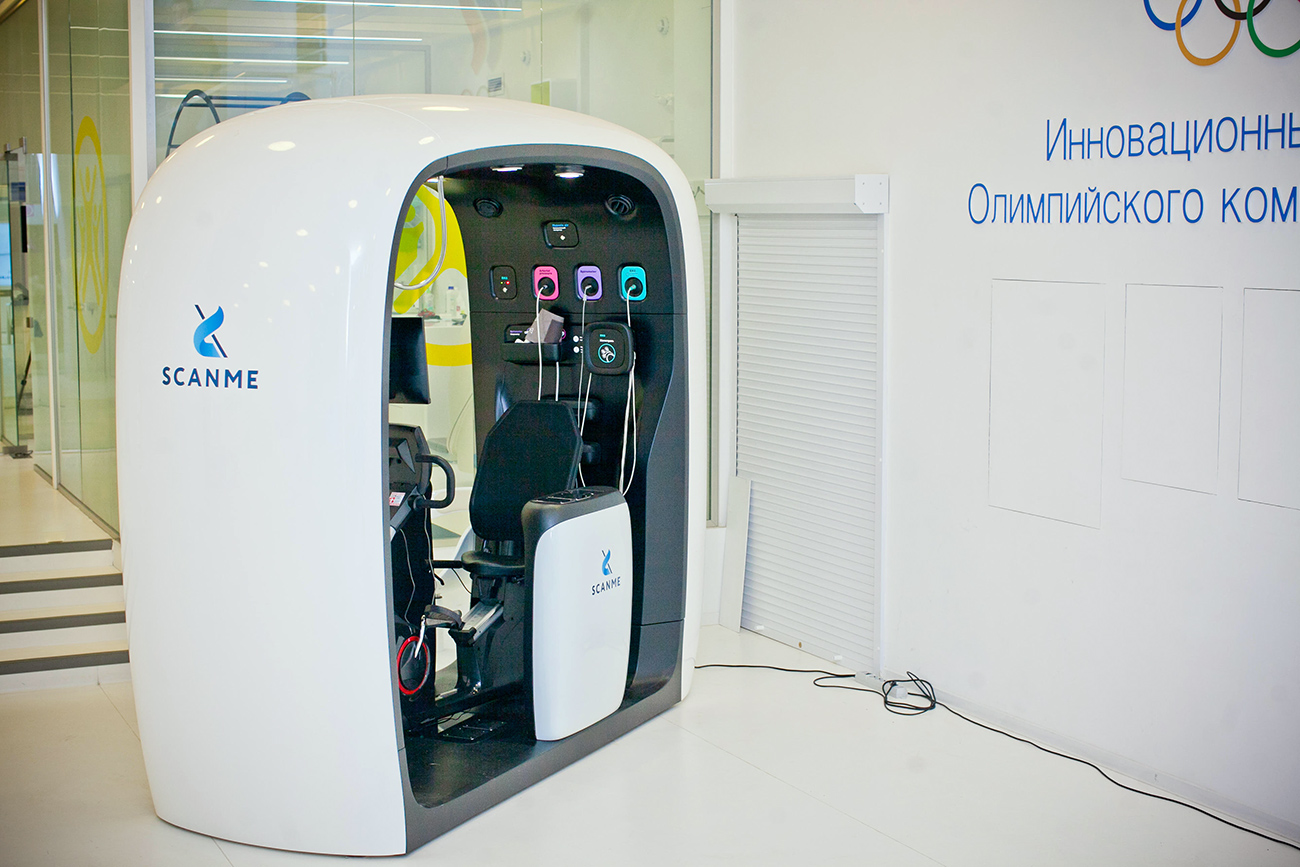Russian design concepts from mosquito killers to self-driving busses

RBTH presents five of the most vivid prototypes from first Moscow Design Biennale.
Kirill Zykov/Moskva Agency1. The MATRESHKA M2B8 self-driving bus
 The first self-driving passenger bus resembles a funicular cabin and is combined with advanced intelligence technology. Source: Kirill Zykov/Moskva Agency
The first self-driving passenger bus resembles a funicular cabin and is combined with advanced intelligence technology. Source: Kirill Zykov/Moskva Agency
The first self-driving passenger bus, or smartbus as its creators refer to it, is a light metallic module construction that resembles a funicular cabin and is combined with advanced intelligence technology. Passengers sit opposite one another, as in a train compartment, which significantly increases the cabin's capacity. Monitors broadcasting information and media content are positioned on the cabin walls. There are also climate-control system panels. The bus has an electric motor capable of driving at speeds up to 30 kilometers an hour. An entire group of designers and engineers worked to produce the exterior of this innovative view into the future of transportation: Anton Kuzhilnyq, Olga Protopopova, Ivan Ruzaev, Grigory Reshetnikov.
2. The AERO mosquito destroyer
 The developers claim that the AERO system kills only harmful, bloodsucking insects, leaving useful ones, such as bees, unharmed. Source: Press Photo
The developers claim that the AERO system kills only harmful, bloodsucking insects, leaving useful ones, such as bees, unharmed. Source: Press Photo
The AERO system is a device for killing mosquitoes in outdoor spaces up to 5,000 square meters. It lures the insects by imitating human life. It releases warm air, carbon dioxide and a special substance with an odor resembling human skin. A powerful ventilator then sucks the insects into a trap and channels them into a special isolation chamber. The developers claim that only harmful, bloodsucking insects are killed, while useful ones, such as bees, remain unharmed.
The device was produced by the Russian studio Smirnov Design. The AERO's body—except its mobile stand—is made entirely of a plastic that is protected from direct sunlight. The trap is equipped with an LED display, backlighting and a dual-zone timer that helps conserve gas. The developers created three speeds for the device, allowing users to control gas consumption.
3. LADA 2050 — Vision of Future Mobility
 The LADA 2050 design draws inspiration from modern architecture, advanced technologies and Iceland's wilderness. Source: Kirill Zykov/Moskva Agency
The LADA 2050 design draws inspiration from modern architecture, advanced technologies and Iceland's wilderness. Source: Kirill Zykov/Moskva Agency
The Lada 2050 project is a demonstration of how Moscow Polytechnic University students envision Russian cars of the future. Vladimir Vorkunov, a student in the Master’s program, created the design. He created a monolithic construction in the form of the letter X, drawing inspiration from modern architecture, advanced technologies and Iceland's wilderness—gabled glaciers and the smooth lines of green hills. The futuristic car’s doors open vertically, similarly to an orchid, thus conserving space. According to the project description, holograms around the car will be used to increase the effectiveness of communication between people, cars and other moving objects. The project was created with the participation of the AvtoVaz Moscow design studio.
4. The Divider Dimedico medical gadget
 The Divider significantly reduces the time needed to prepare for cardiodiagnoses, not only by untangling the cables but also by conveniently orienting them in the doctor's hands. Source: Press Photo
The Divider significantly reduces the time needed to prepare for cardiodiagnoses, not only by untangling the cables but also by conveniently orienting them in the doctor's hands. Source: Press Photo
The Divider Dimedico medical gadget was designed to quickly untangle the cardiograph cables used by medics in ambulances and with resuscitation machines. The Divider significantly reduces the time needed to prepare for cardiodiagnoses, not only by untangling the cables but also by conveniently orienting them in the doctor's hands. The device's design allows it to be installed on new machines and older ones already in use.
5. The SCANME Hardware-software complex
 The SCANME developers claim that the device can conduct a full diagnosis within 30-40 minutes instead of the usual two to three days required when going to various doctors. Source: Press Photo
The SCANME developers claim that the device can conduct a full diagnosis within 30-40 minutes instead of the usual two to three days required when going to various doctors. Source: Press Photo
The SCANME device helps one conduct a wide-ranging diagnosis of their body with 93 tests that can be used to provide personalized recommendations for training loads, training types, nutrition and spa treatments. The system includes six blocs (measurements, analytics, diagnostics, correctional, systemic and a bloc for processing the information as a whole) in one metallic body-capsule. Thanks to a simple and minimalistic form, the apparatus is light and appropriate even for people with claustrophobia. Its developers claim that the device can conduct a full diagnosis within 30-40 minutes instead of the usual two to three days required when going to various doctors.
Moscow Design Biennale website
Read more: Pimp my Soviet ride: Alternative USSR automotive history>>>
If using any of Russia Beyond's content, partly or in full, always provide an active hyperlink to the original material.
Subscribe
to our newsletter!
Get the week's best stories straight to your inbox